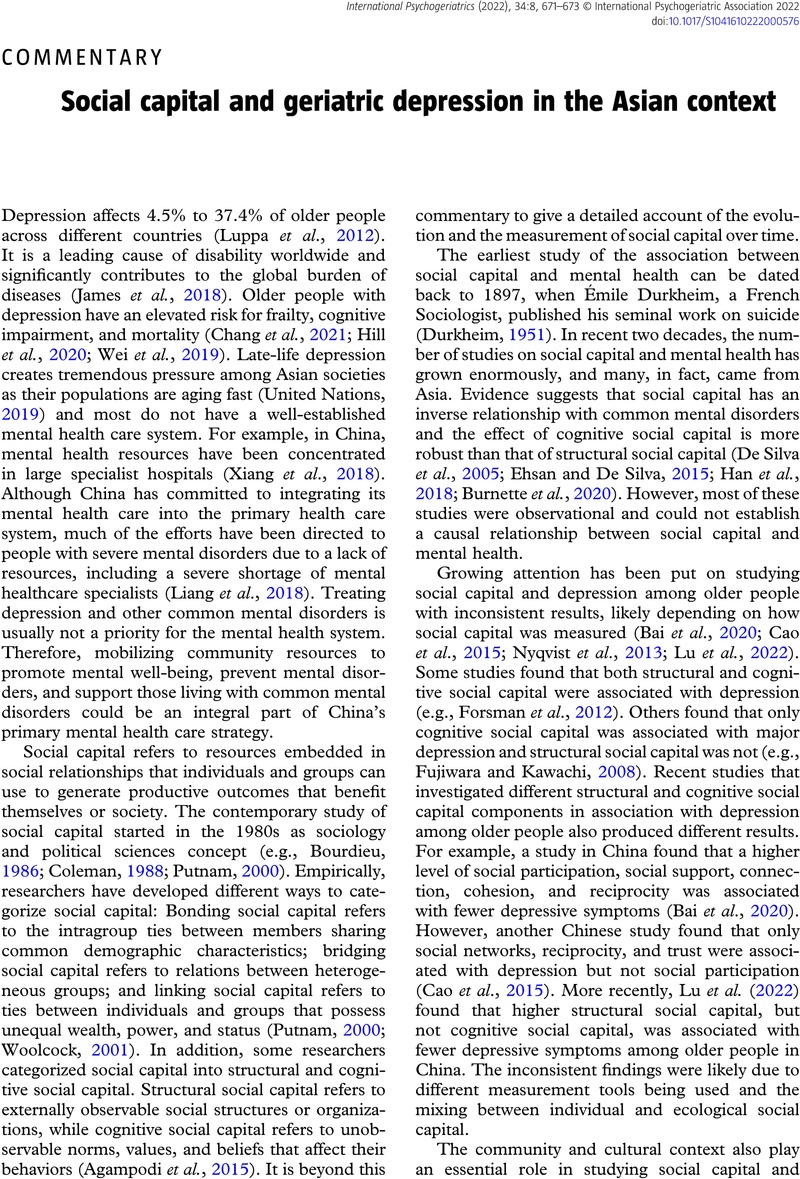Crossref Citations
This article has been cited by the following publications. This list is generated based on data provided by Crossref.
He, Michelle Sok I
Lam, Agnes Iok Fong
and
Wong, Paul Wai Ching
2024.
The association of social capital and mental well‐being among older residents living in public housing in Macau Special Administrative Region (S.A.R.) – A qualitative case study of Seac Pai Van.
Asian Social Work and Policy Review,
Vol. 18,
Issue. 1,





